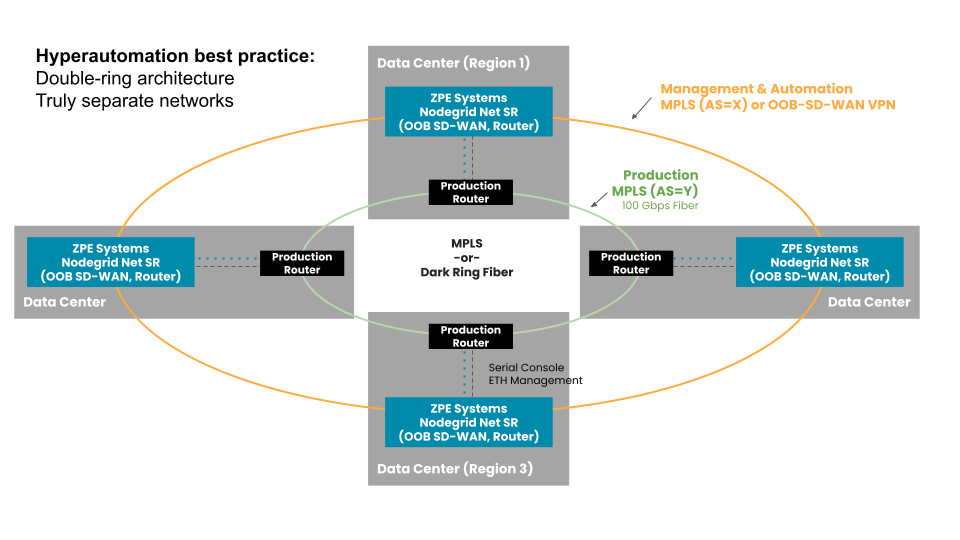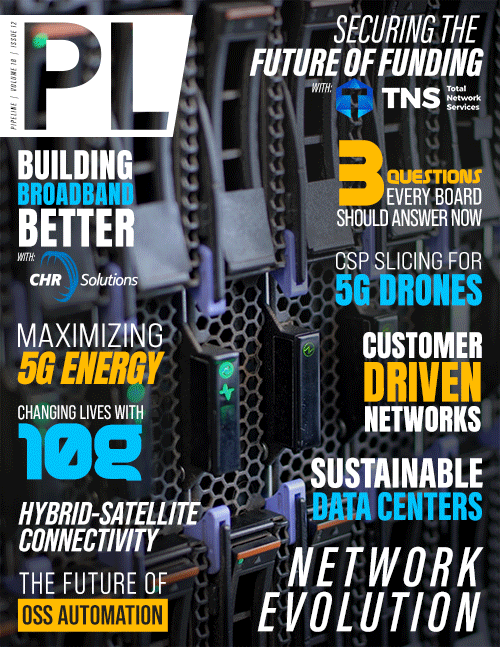Three Questions Every
Board Should Ask Now
AI Ops infrastructure: This layer receives rich information from observability platforms to make reactive and predictive decisions at scale. Using machine learning and artificial intelligence, this layer learns the network’s normal behaviors and pushes changes through the orchestration and automation layer.
This blueprint is the reference architecture validated to successfully implement Gartner’s definition of hyperautomation, as well as meet the Open Networking User Group (ONUG) Orchestration and Automation recommendations. This blueprint gives you the necessary layers to confidently answer the three questions that will come up during your boardroom meeting, and outlines the practical steps required to achieve IT resilience.

Figure 2: Dedicated automation network best practice known as double-ring architecture
click to enlarge
Winter is looming: preparation strategies and tactics
Orchestration and automation are key to preparing IT infrastructure for lean operations this winter. By making orchestration and automation completely independent of the production infrastructure, IT teams can build hyperautomated environments while being able to safely recover from errors, much like having a network-wide ‘undo’ button. Despite limited staff and a hybrid/virtual workforce, this enables teams to:
- scale their efforts to reduce workloads and meet SLAs
- gain a full virtual presence and run local automation to maintain availability
- automatically push configuration and image updates to close security gaps and maintain compliance.
In order to meet customer expectations of high service availability, organizations are turning to hyperautomation to automate as many IT processes as possible. This requires CIOs to enable their teams with digital transformation initiatives that include technologies for hyperautomation. The network automation blueprint lays the groundwork for the management network design pattern required to accommodate this transformation and ensure business can provide reliable digital services despite the coming winter recession.
To prepare for the coming winter and operational challenges, download the complete network automation blueprint here: https://www.zpesystems.com/network-automation-blueprint.



















